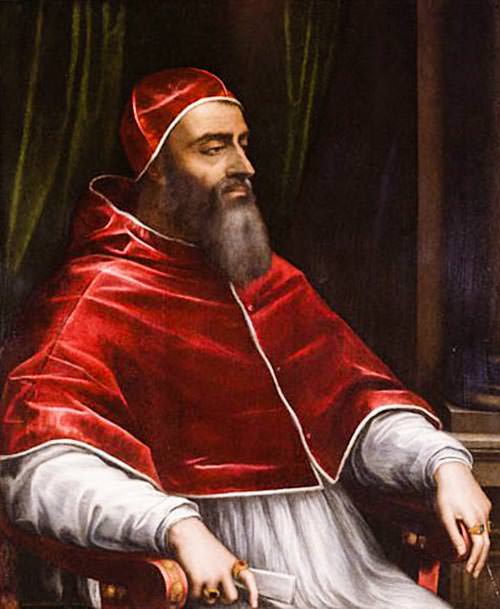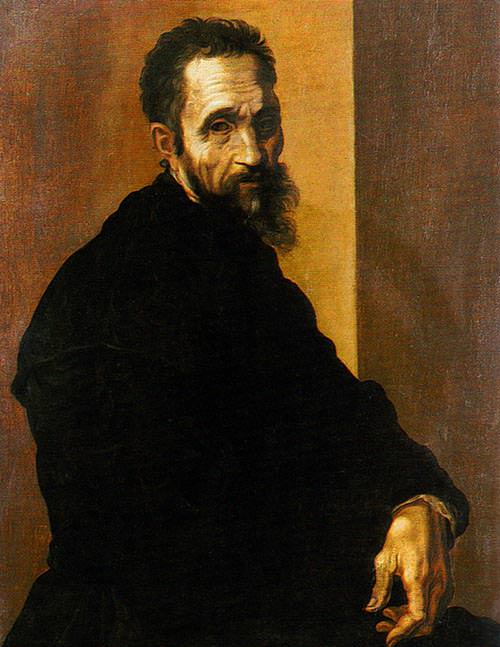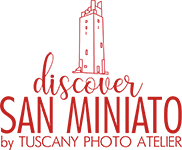Chronicle of a meeting
It’s 1533. Pope Clement VII (Giulio de’ Medici, 1478 – 1534) leaves from Rome for Nice to celebrate the wedding of his granddaughter Catherine de’ Medici with Henry, son of Francis I, king of France. Just a few years earlier the terrible sack of Rome had happened. Fewer years had passed since the Spanish army had crossed the peninsula. Clement VII is looking for a political balance. On his way to Nice he decides to stop in San Miniato.
San Miniato, still known as “al Tedesco“, is the great fortress that dominates the Valdarno area. Three years earlier, its walls held up to the siege of the Spanish army and its cannons. Cannons, gunpowder are the new fearsome weapons, which did not exist when the walls of San Miniato were built. Here the Pope’s court can stop safely.

Pope Clement VII
The arrival of such a caravan in the city must have been a sight, preceded by the knights who carried the papal insignia, followed by the Pope’s carriage and escort, then the succession of dignitaries and servants. Who knows how many floats and how much else the papal procession was composed. The inhabitants had already seen him on the road that climbs slowly and leads to the city gates. It passes through the first circle of walls and in the meantime the news spreads among the people. When the carriages passed through the center, there was an exclamation of wonder, of rejoice, a loud exult and it was followed by reverences reserved for the important guest.
The Pope in San Miniato.
It was not new for San Miniato to have been visited by a pope: Gregory V in 994 and then Eugene IV in 1434. Now a century later a Pope’s stop is repeated. For the Samminiatesi this visit is like a blessing, a relief after the plague of 1525 and after the Spanish siege of 1529 – 30: having the Pope within the walls is true joy. On the way through the streets of the city the caravan passes in front of the Dominican church, the friars are crowded on the stairs of the stone portal and kneel at the Pope’s passage. The crowd has now surrounded the Pope’s carriage. Clement shows himself from the carriage and with his hand he blesses the friars and the people around. Here, the procession has reached the second passage, the mighty Porta Toppariorum. It’s this door that leads into the walled square, where the markets are held, in the most fortified part of the castle. Pope Medici gets out of the carriage and enters, together with the monsignors, in what had once been the Imperial Palace.

Michelangelo Buonarroti
Florence too had to defend itself from the Spanish troops. Michelangelo (1475 – 1564) directed the fortification works of the city. For some time the Pope has asked him to return to work in the Sistine Chapel where more than twenty years earlier Julius II (Giuliano della Rovere, 1443-1513), had made him fresco the ceiling. And he made it a masterpiece. Now it is Pope Clement who wants him to paint the altar wall of the same chapel. A Resurrection was the request. Michelangelo doesn’t like this theme. It’s a difficult moment for the relationship between him and the Pope. Clemente is a Medici and Michelangelo has sided with the Republic, for the freedom of Florence.
He learns that the Pope is not far from Florence. It’s in San Miniato, twenty miles from Florence. He decides to go and talk to him. Michelangelo still doesn’t feel like going back to Rome and Clemente is heading to Nice. The best thing is therefore to reach the Pope in San Miniato. He takes the horse and leaves for the city of the Rocca. So, a few days after the arrival of the Pope’s long caravan, a man alone, but certainly not least, on his horse enters San Miniato from Porta Fiorentina. He arrives at the former Imperial Palace and is announced. The meeting takes place. They talk.
Without a doubt, what Michelangelo presents to Clement VII must have been an important thing. So important that on the same day of the visit, on his return to Florence, he takes pen and paper and makes a note of it, a memo, now preserved in the Vatican Library and published in all his biographies:
In the thousand five hundred thirty-three.
I remember how today, the 22nd of September, I went to San Miniato al Tedesco to speak to Pope Clement who was going to Nice and the same day Brother Sebastiano del Piombo left me his horse
The stop of Clement VII in San Miniato is history documented by the chronicles of the time and by important documents. A few years ago Michelangelo’s autograph was exhibited at the Euteleti Academy and was the focus of a conference held by Prof. Carlo Pedretti.
A few words for a complete report. Michelangelo writes year, day and month. He writes “today”, that is, the day of the meeting, “I went to San Miniato al Tedesco” precisely because he was in Florence. This ticket informs us of their meeting, we can imagine, on a fresh September day and confirms that the Pope was headed for Nice. Finally this, which was to serve as a reminder for Michelangelo, recalls that Brother Sebastiano del Piombo (Sebastiano Luciani 1485 – 1547) lends him the horse to return to Florence. On that day 22 September 1533 in San Miniato there are Pope Clement VII, Michelangelo and another great artist such as Sebastiano del Piombo who left us, among other things, some portraits of Pope Clement. That day San Miniato was the capital of art.
Historians agree that during this meeting Michelangelo presented Pope Clemente the intention to carry out the Last Judgment, and not a Resurrection, on the altar wall of the Sistine Chapel. In addition to the written evidence, a recently deciphered epigraph remains on Clement VII’s stay in San Miniato. Reading is made difficult by its position and by the time that has corroded some parts of it. This epigraph was later placed in memory of the Pope’s stay in the place where the chapel of the Imperial Palace was once located and where Clement VII celebrated Holy Mass. Although it’s not improbable, given the immediate proximity, that he also celebrated it in the Church of Santa Maria.
Luca Macchi








